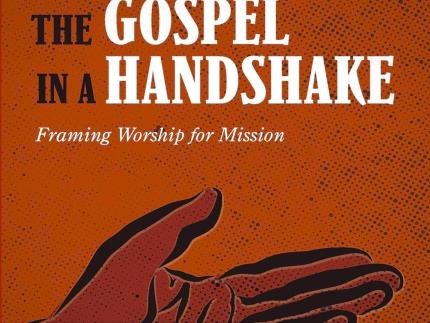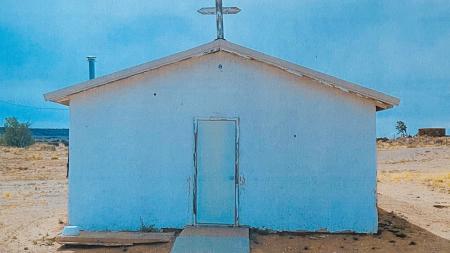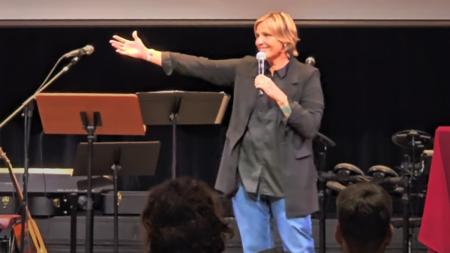Returning to Historic Treasures

Kevin Adams used a “seeker-friendly” worship service for a period of time after planting Granite Springs Church, a Christian Reformed congregation in Lincoln, Calif.
Adams and his wife, Gerry, moved to the area, located about 30 miles north of Sacramento, in 1991 to launch a church. At that time, Christian Reformed Home Missions (now part of Resonate Global Mission) was focusing on Lincoln as a community that could likely support a new Reformed church.
As they set down roots and made connections with people in the community, it became clear that the new church would probably bring in people who had little or no background in attending church, said Adams, author of the new book The Gospel in a Handshake: Framing Worship for Mission.
Adams’s book is the first in what is called The Worship and Witness series, published by Wipf and Stock Publishers in connection with the Calvin Institute of Christian Worship.
While this book is the first in the series, a second has now also been published: Setting the Spiritual Clock by Paul Louis Metzger.
“The series will engage voices from the global church and foreground crucial areas of inquiry for the vitality of public worship in the twenty-first century,” said Noel Snyder, program manager at the Institute for Christian Worship and one of the series editors.
Some other topics planned in the series will include gospel music, historical worship practices, and Latinx contextual perspectives, said Synder.
In his book, written in an easy-to-read engaging style for worship leaders as well as others interested in worship, Adams uses a format in which he writes letters of advice and reflection to an imaginary worship leader named Jordan.
Filled with the story of Granite Springs Church, Adams chronicles for Jordan those early days when they downplayed liturgy, using the attractional model of church growth and worship developed by megachurches such as Willow Creek Community Church near Chicago.
“We believed the traditional liturgy wouldn’t work . . . that the old ways don’t work, especially in the secular place where we were starting the church,” said Adams.
Hospitality, welcoming everyone with open arms, became a watchword in the early days of Granite Springs Church. Making the gospel understandable to adults as well as children and offering lots of dramas were important elements early on.
“We rented a warehouse space in which to meet,” said Adams. “It had mice that scurried around during the service; it had bat droppings on the walls, and it leaked during the winter. By God’s grace, no one came because of the ambiance.”
At that time, the goal of many church plants was to attract people by featuring lively praise bands and singers; often the ministries focused on helping church members to grow in all aspects of their lives.
At Granite Springs, they threw out such classical aspects of worship as the call to worship, the confession, the assurance of pardon, and the benediction — because, writes Adams in his book, “we judged them irrelevant and confusing to people new or lukewarm to the church.”
Granite Springs wanted above all to be missional — inviting everyone and making the worship easy, if not enjoyable and entertaining.
But after a few years into the ministry, said Adams, it became clear that they were missing something. They realized their more informal worship style needed to change.
Relying on tried and true resources, they turned to the weighty resources of the Christian church.
“We decided to invite people into the liturgical year, to help them get to know the Trinity better, and to get to know what we celebrate at Epiphany, or why we celebrate the baptism of Jesus,” said Adams.
Slowly they started to reincorporate traditional elements of worship — the call to worship, the confession, the assurance of pardon, and the benediction — into their weekly worship service.
By embracing historic prayers, creeds, and ways of doing things, they found they could connect with “a conversation that is wonderful and gets deeper into your bones,” said Adams.
In the latter part of the book, Adams turns from writing letters to Jordan to offering some reflections on what he has learned about worship and what it can accomplish and mean.
In that section Adams writes about books he has read and TV programs he has watched and people he has met, and in those pieces he mixes in what he has learned about worship in his decades of ministry.
“As a longtime pastor, I’m fascinated by the dazzling variety of the church across the globe and throughout history,” he writes. “And I’m sympathetic to anyone who feels the need to push against a long-practiced or assumed model for worship and ministry.”
At the same time, he explains that he is constantly amazed and satisfied by the spiritual treasures the church has turned out over the centuries. These treasures are what the congregation at Granite Springs now holds to and looks for, he says. Grace comes to them as people gather — often people who know one another well and see themselves as fellow pilgrims on the journey. They come for prayer and praise and for partaking of the immense mystery of God.
In his book Adams writes that psalm-singing is now an important part of the liturgy. “One of the reasons our congregation has become so bullish on praying and often singing the psalms in worship . . . [is that] we see how the psalms spiritually form us. They prepare us for times of grief. They prepare us to give thanks.”
Another crucial element they now offer, after trying to offer it in different ways at different times, is sharing the Eucharist, the bread and wine of the Lord’s Supper, at every service. Soon after the sermon in their building, no longer a warehouse, the pastor prays and invites the congregation to partake of the elements, which remind us of the body and blood of Jesus.
In his book Adams writes: “Forward they come. Some glide; others mosey or amble. Some shuffle, assisted by walkers or hobbling on crutches. Some look expectant or serene; others obviously have discomfort. As I’ve said, it’s kind of a holy mess. Behold, the body of Christ.”


